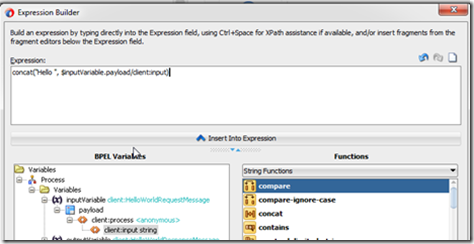
Concatenate from a SQL query in Oracle. Ask Question Asked years, months ago. Active years, month ago. I have data like this in a table.
Oracle CONCAT function : The Oracle CONCAT() function returns the result (a string) of concatenating two string values. On Oracle (and up) you may have a similar function, WM_ CONCAT (owned by WMSYS), already installed. WM_ CONCAT is not documente so you may not want to use it in your Production applications. STRAGG is not so convenient if the order of items in the concatenated string is important. In Oracle , how can I concatenate multiple returned from a single-field select statement into a comma-separated string?
How can I concat all registers of a sub- select in a single field. Noted that the Oracle CONCAT () function concatenates two strings only. If you want to concatenate more than two strings, you need to apply the CONCAT () function. Oracle provides the CONCAT character function as an alternative to the vertical bar operator for cases when it is difficult or impossible to control translation performed by operating system or network utilities.
Use this function in applications that will be moved between environments with differing character sets. Oracle Database 19c for Windows has just been released. Need a hand getting up and running?
Here is a walkthrough of the software installation, and here is how to get your first database created. Therefore, if one of the arguments is a LOB, then the returned value is a LOB. If one of the arguments is a national datatype, then the returned value is a national datatype. The CONCAT function simply joins the comma-separated list of strings and expressions (in this case column from the query: url and title). As with any SELECT statement, the result set can be varied with the use of an optional WHERE clause and other valid SQL syntax.
The operator is more commonly used than the Concat function because it’s easier and the code stays simpler. In PostgreSQL, the CONCAT function supports multiple parameters, unlike Oracle. Conclusion String concatenation in SQL is a common string manipulation technique. An example on oracle -developer.
COLLECT function in Oracle 10g to get the same result. This method requires a table type and a function to convert the contents of the table type to a string. Starting in Oracle 11gR LISTAGG is preferred over the unsupported wm_concat function.
Also see: pivoting one row of several columns into one column of several rows. Action: Make sure that the result is less than the maximum size. My Oracle Support provides customers with access to over a million knowledge articles and a vibrant support community of peers and Oracle experts. Oracle offers a comprehensive and fully integrated stack of cloud applications and platform services.
In MySQL, you can return your query as a comma separated list by using the GROUP_ CONCAT () function. MySQL CONCAT () function is used to add two or more strings. There may be one or more arguments.

Returns the string that from concatenating. The literal string will be displayed in very row of the query result. Literal strings can be concatenated with another literal string or another column by using function CONCAT.
Special characters (e.g. single or double quotes) in the literal string need to be escaped. The second is to use the SQL CONCAT function, in which we pass parameter values to SQL CONCAT function. To sort query result you can use ORDER BY clause in SELECT statement.
The following query sorts the employees according to ascending order of salaries. Several time i need to groups some values in one column and make it into one single column which separated by commas, for example when i have table category_product which is contains column productI productName, and category. Ever wanted to get the of a query in a single string, with values separated by commas? It would help you get better responses if you could describe what you are trying to get and what you are, in fact, getting.
Also, if you can remove the extraneous columns, predicates, etc.
Keine Kommentare:
Kommentar veröffentlichen
Hinweis: Nur ein Mitglied dieses Blogs kann Kommentare posten.